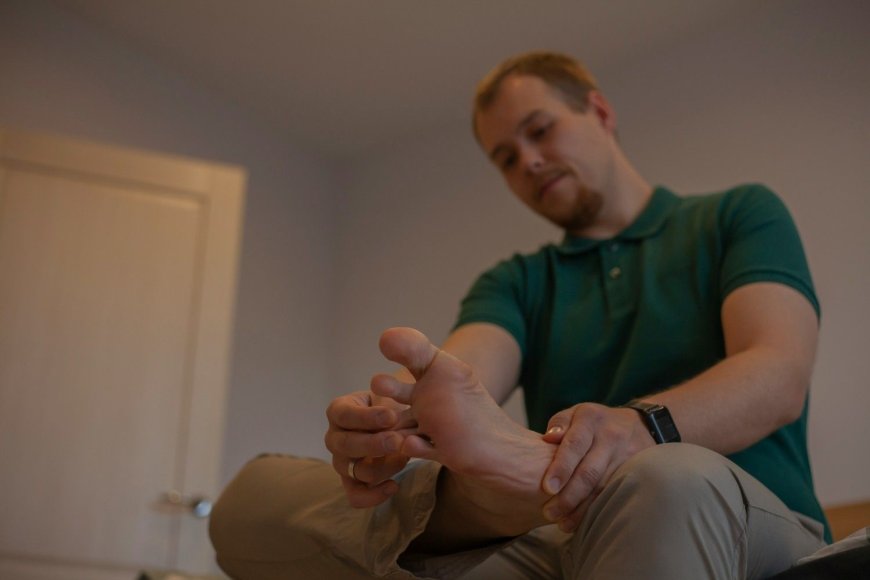Plantar Fibroma vs Plantar Fibromatosis: What’s the Difference?
Learn the key differences between plantar fibroma and plantar fibromatosis, including symptoms, causes, and treatment options to help you better understand these foot conditions.

Foot pain is one of the most common orthopedic complaints, often stemming from conditions like plantar fasciitis, heel spurs, or flat feet. However, two lesser-known yet frequently confused disorders—plantar fibroma and plantar fibromatosis—also affect the bottom of the foot, particularly the arch. Despite sounding similar and often sharing overlapping symptoms, these conditions are distinct in their pathology, progression, and treatment strategies.
Early recognition and proper diagnosis are essential, especially as researchers continue to explore innovative therapies. If you or someone you know is struggling with one of these conditions, you may be eligible to participate in Plantar Fibromatosis clinical trials aimed at discovering new treatment options and improving outcomes.
Let’s dive deep into the definitions, causes, symptoms, and treatments for both plantar fibroma and plantar fibromatosis to better understand how they differ—and what you can do about them.
What Is Plantar Fibroma?
A plantar fibroma is a benign (non-cancerous) nodule that forms within the plantar fascia—a thick band of connective tissue that runs along the bottom of your foot, from the heel to the toes. These nodules are usually small, firm, and localized. They can be felt under the skin as a lump in the arch of the foot.
Key Characteristics:
-
Typically affects one foot, though bilateral cases can occur.
-
Nodules are usually solitary and less than 2 cm in diameter.
-
Grows slowly and may remain stable in size for years.
-
Pain may occur when walking or when shoes put pressure on the nodule.
-
The overlying skin usually remains unaffected.
What Is Plantar Fibromatosis?
Plantar fibromatosis, also known as Ledderhose disease, is a more advanced and complex condition. It involves multiple fibromas and a more aggressive proliferation of fibrous tissue within the plantar fascia. Unlike a solitary plantar fibroma, this disorder tends to progress, causing thickening and contracture of the fascia over time.
Key Characteristics:
-
Often bilateral (affecting both feet).
-
Involves multiple nodules or fibrous bands.
-
The condition is progressive, potentially impairing foot function.
-
Can lead to foot deformity or severe pain during walking or standing.
-
Often associated with similar fibromatoses in other parts of the body, like Dupuytren’s contracture (hand) or Peyronie’s disease (penis).
Comparing Causes and Risk Factors
Plantar Fibroma Causes:
-
Often idiopathic (no clear cause).
-
May result from microtrauma or repetitive strain on the fascia.
-
Genetic predisposition in some individuals.
-
More common in middle-aged individuals, especially men.
Plantar Fibromatosis Causes:
-
Also idiopathic, but more clearly linked to genetic and systemic factors.
-
Frequently associated with:
-
Dupuytren’s contracture
-
Liver disease
-
Diabetes
-
Epilepsy (especially those on phenytoin)
-
Family history plays a more significant role.
-
Chronic alcohol consumption may be a contributing factor.
Symptoms: Similar Yet Different
Both conditions present with nodules in the foot, typically in the arch. However, the symptoms and severity vary.
|
Symptom |
Plantar Fibroma |
Plantar Fibromatosis |
|
Nodules |
Solitary |
Multiple |
|
Growth Speed |
Slow, often remains stable |
Progressive over time |
|
Pain Level |
Mild to moderate |
Moderate to severe |
|
Bilateral Involvement |
Rare |
Common |
|
Functional Impact |
Minimal unless large |
Can cause deformity, gait changes |
|
Skin Changes |
None |
May develop skin puckering |
Diagnosis: How Are They Identified?
Doctors usually begin with a physical exam, palpating the foot to assess the nodules’ size, location, and tenderness. For a definitive diagnosis, imaging and sometimes histology may be used.
Diagnostic Tools:
- Ultrasound: Shows location, size, and consistency of the fibroma.
-
MRI: Helps differentiate between fibromas, cysts, and malignant masses.
-
Biopsy (rarely needed): Used when malignancy is suspected or diagnosis is unclear.
Treatment Strategies
Plantar Fibroma Treatment:
Conservative Options:
- Custom orthotics to relieve pressure
- NSAIDs for pain management
- Stretching exercises
Minimally Invasive Options:
- Corticosteroid injections (to reduce size and inflammation)
-
Verapamil gel or other topical treatments
Surgical Options:
- Excision (only when pain becomes unmanageable)
- Risk of recurrence and scar tissue formation
Plantar Fibromatosis Treatment:
Conservative Options:
-
Same as above, but often less effective
Advanced Options:
-
Radiation therapy (early-stage intervention)
-
Collagenase injections (under research)
-
Anti-fibrotic drugs (e.g., tamoxifen, verapamil)
Surgical Options:
-
Fasciectomy (partial or complete removal of the plantar fascia)
-
May involve skin grafts or advanced wound care
-
Higher recurrence rate than plantar fibroma
Can Either Be Cured?
Plantar Fibroma:
Most plantar fibromas do not require aggressive treatment and can be managed conservatively. Surgery may be curative for isolated cases, but recurrence and scar formation can be problematic.
Plantar Fibromatosis:
Currently, there is no definitive cure. Treatment focuses on slowing progression and maintaining foot function. Surgical excision may provide relief, but recurrence is common. Research is ongoing, and clinical trials may offer new hope. Patients are encouraged to participate in Plantar Fibromatosis clinical trials to explore emerging therapies that could revolutionize treatment.
Prognosis and Long-Term Management
- Plantar Fibroma has a generally favorable outlook. Many patients live without significant discomfort, especially if nodules remain small.
- Plantar Fibromatosis poses more challenges. As the condition progresses, it may restrict daily activities, affect shoe choices, and require repeat interventions.
Maintaining a healthy lifestyle, avoiding trauma to the feet, and seeking early medical evaluation can significantly improve outcomes in both conditions.
Prevention Tips
While prevention may not be fully possible, the following strategies can help reduce the risk or slow progression:
- Wear supportive shoes with proper arch support.
- Avoid high-impact sports if you’ve had foot nodules before.
- Treat foot injuries promptly.
- Maintain a healthy weight to reduce strain on the plantar fascia.
- Monitor for changes if you have a family history of fibromatoses.
Psychological Impact and Support
Chronic foot pain or deformity can lead to reduced mobility, social withdrawal, and even depression. Particularly with plantar fibromatosis, the visibility and discomfort of multiple nodules may cause self-consciousness or frustration.
Patients benefit from:
- Support groups
- Physical therapy
- Counseling, especially after surgical treatments
Engaging in community-based resources or connecting with others experiencing similar conditions can significantly boost morale and coping mechanisms.
Conclusion
Though plantar fibroma and plantar fibromatosis share common ground in affecting the plantar fascia and producing nodules, they differ in severity, complexity, and management. Understanding the distinctions is vital for accurate diagnosis and effective treatment.
Plantar fibroma is typically isolated and slow-growing, with a good prognosis and limited functional impact. On the other hand, plantar fibromatosis is a progressive condition with more aggressive behavior, often requiring comprehensive care.
If you're struggling with unexplained foot lumps, chronic arch pain, or worsening foot function, don’t delay medical evaluation. Early intervention can prevent complications and offer more treatment options.
As you navigate these conditions, always remember to stay informed, explore the latest therapies, and ask your healthcare provider What is Plantar Fibroma?—and how does it differ from the broader implications of plantar fibromatosis. Knowledge is your first step toward better foot health.
What's Your Reaction?
 Like
0
Like
0
 Dislike
0
Dislike
0
 Love
0
Love
0
 Funny
0
Funny
0
 Angry
0
Angry
0
 Sad
0
Sad
0
 Wow
0
Wow
0




































